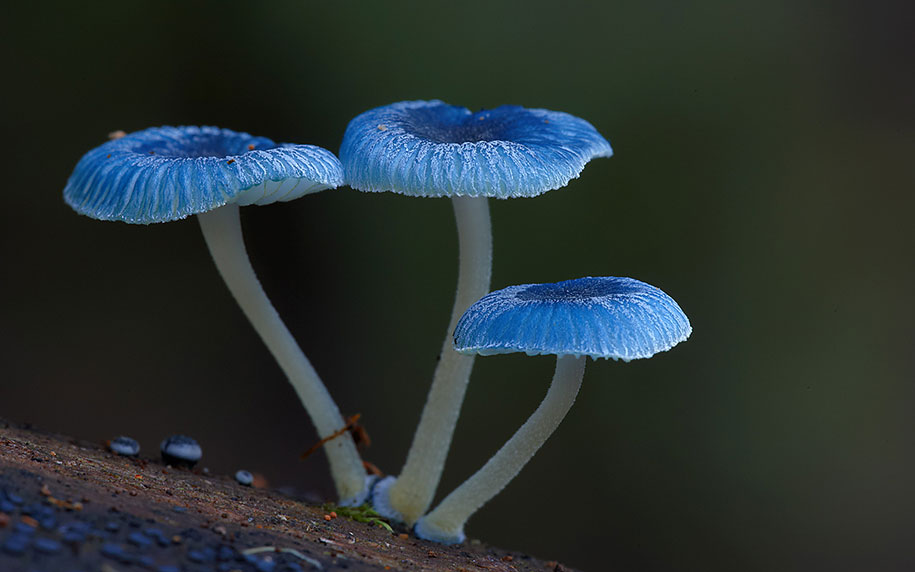The world of fungi encompasses an astonishing variety of organisms that exhibit an array of characteristics, habitats, and ecological roles. Among these, certain types of fungi are especially rare, often due to their specialized environmental needs or limited geographic distribution. Understanding these unusual forms not only enriches our scientific knowledge but also highlights the importance of conservation efforts. This article delves into the intricacies of rare fungi, exploring their classification, ecological significance, and the implications of their rarity.
Classification and Overview of Unique Fungi
Fungi, as a kingdom, are classified into various phyla based on their reproductive structures, life cycles, and genetic characteristics. Notable phyla that include rare species are Basidiomycota, Ascomycota, and Chytridiomycota. Within these groups, specific genera harbor species that are rarely encountered, often due to their restrictive habitats.
The Ascomycota phylum, known for sac-like structures containing spores, holds species like *Phaeophysalia nashii*, an elusive fungus found primarily in subtropical regions. These fungi typically thrive in microhabitats—such as nutrient-rich leaf litter or decaying wood—making them difficult to locate. In fact, many species are so specialized that they only appear under specific climatic conditions or in particular ecological niches.
Another intriguing example is the Basidiomycota phylum, home to the flamboyant *Amanita muscaria*, commonly known as the fly agaric. Although not rare in distribution, specific morphotypes that deviate from the typical red-capped variety can be seldom seen. These rare variants are often at risk due to habitat destruction and climate change, which threaten their survival.
Exploration of Distinct Rare Fungi
The spectrum of mushroom diversity is breathtaking, yet certain types stand out for their rarity. One such type is the *Mycena chlorophos*, a bioluminescent mushroom found in the subtropical forests of Asia and South America. This captivating organism emits a soft greenish glow at night, an evolutionary trait believed to attract insects that facilitate its spore dispersal. The bioluminescence is not just an enigmatic feature; it plays a crucial role in its ecology, demonstrating the interconnectedness of life forms within an ecosystem.
Another remarkable example is the *Agaricus blazei*, more commonly known as the almond mushroom. Hailing from Brazil, it is lesser-known outside its native habitat. Although it has garnered attention for its nutritional and medicinal properties, particularly in traditional medicine, this fungus is rarely found in the wild due to specific climatic requirements. Its rarity renders it not just a subject of interest for mycologists but also a focus for biomedical research, assessing its potential in immunotherapy and anti-cancer treatments.
The *Lycoperdon perlatum*, or common earthball, may appear deceptively mundane yet exemplifies the hidden complexities of fungi. When mature, this puffball releases copious spores, a method through which it engages with its environment. While not endangered, distinct color morphs of this species are infrequently encountered and can provide insight into genetic variations and environmental adaptability.
Ecological Significance of Rare Fungi
The rarity of specific fungi often correlates with their ecological roles, acting as keystone species within their respective habitats. Many rare fungi contribute to nutrient cycling, decomposing organic matter and recycling essential elements such as nitrogen and phosphorus back into the ecosystem. For example, the *Tricholoma matsutake*, or matsutake mushroom, is highly prized in culinary circles yet faces threats from habitat loss. This fungus forms symbiotic relationships with tree roots, facilitating nutrient exchanges critical to forest health.
Fungi like the *Fomitopsis betulina*, commonly known as birch polypore, exemplify the role of wood-rotting fungi in forest ecosystems. Despite being rare, its presence is vital in facilitating the decomposition of dead trees, contributing to soil health and biodiversity. Their interactions with trees not only aid in forest sustainability but also provide habitats for a multitude of organisms, illustrating the intricate web of life fungi help sustain.
Furthermore, some rare fungi, such as *Cordyceps unilateralis*, exhibit parasitic lifestyles, infecting host insects and manipulating their behavior. This fascinating interaction demonstrates the complexity of ecological interdependencies and showcases how rare fungi are not mere participants but rather pivotal players in the drama of life on Earth.
Challenges to Rarity and Conservation Efforts
The precariousness of rare fungi is exacerbated by numerous anthropogenic factors. Habitat destruction, climate change, pollution, and overharvesting have led to the decline of many unique species. Urbanization alters landscapes, depleting the intricate microhabitats that fungi require to thrive. As forests are converted into agricultural land or urban areas, the delicate balance necessary for fungi proliferation is jeopardized.
The ongoing degradation of ecosystems necessitates immediate conservation measures to prevent further loss of biodiversity. Despite the difficulties in cataloging undocumented species, citizen science initiatives encourage enthusiasts to observe and report rare fungi, thus contributing to a broader ecological database. Engaging local communities in conservation efforts raises awareness about the importance of preserving fungi and their habitats, which is imperative for sustaining ecosystems.
Additionally, legislative protections can help safeguard critical habitats from exploitation. Inclusion of rare fungi within endangered species legislation can offer a framework for their conservation and inspire proactive management of their ecosystems. Such collaborative efforts between mycologists, ecologists, and the public are fundamental in ensuring these remarkable organisms continue to thrive.
Conclusion
The realm of rare fungi is an intricate tapestry woven with diverse forms, complex relationships, and profound ecological contributions. As guardians of our ecosystems, these unique organisms deserve our attention and respect. Balancing the pursuit of knowledge with a commitment to conservation is vital for the continued existence of these fascinating life forms. Through increased awareness and proactive measures, humanity holds the power to protect the delicate balance within this remarkable kingdom, ensuring that future generations can marvel at the wonders of rare fungi.
